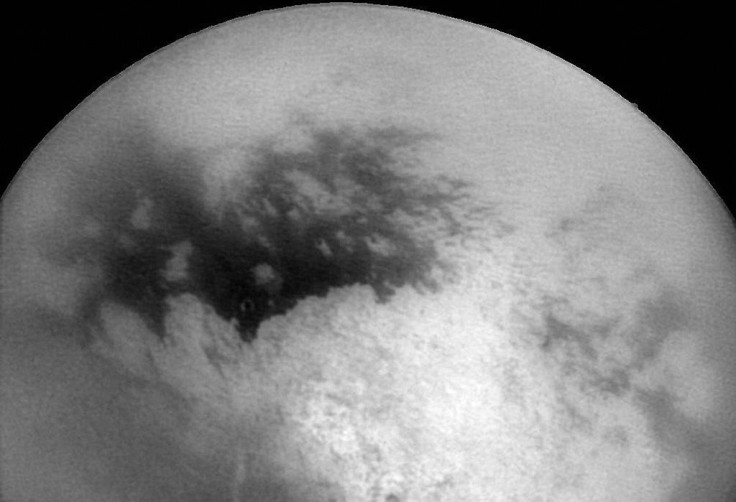'Scientifically Remarkable Area' On Saturn's Titan Awaits NASA's Dragonfly Mission, Says Study
KEY POINTS
- The Dragonfly mission is scheduled to launch in 2027
- Its target landing site is Shangri-la dune field near the Selk crater region
- It will arrive on Titan in 2034
The Dragonfly mission, selected as part of NASA's new frontiers, has found a perfect landing site. Scheduled to launch in 2027, the mission will fly to Titan, one of Saturn's moons, and set itself down in Shangri-la dune field near the Selk crater region.
A new study published in the Planetary Science Journal mapped six areas across the Selk crater region with the help of data taken by the Cassini RADAR.
The dragonfly is essentially a robotic rotorcraft, which will work similarly to a consumer drone. It will arrive on Titan in 2034 and is expected to weigh 450 kilograms (992 pounds), have eight rotors, each about a meter (3.3 feet) in diameter.
"Over the next several years, we are going to see a lot of attention paid to the Selk crater region," said the study's co-author, planetary scientist Alex Hayes, from Cornell University.
As per researchers, the region is a "scientifically remarkable area" and is likely to have dunes and broken-up, icy ground.
"Dragonfly will land in an equatorial, dry region of Titan – a frigid, thick-atmosphere, hydrocarbon world," said lead author, planetary scientist Léa Bonnefoy, from Cornell University in New York.
"It rains liquid methane sometimes, but it is more like a desert on Earth – where you have dunes, some little mountains, and an impact crater. We're looking closely at the landing site, its structure, and surface," Bonnefoy added.
Dragonfly will move around at a maximum speed of 36 kilometers (22 miles) per hour once it reaches Titan's low wind, low gravity atmosphere. The rotorcraft will progressively fly for longer and longer durations from its initial landing site.
The detailed study of the region was made possible by the Cassini probe through its radar images. The researchers studied the deviations from radar signals as they changed and reflected from different angles, known as their backscatter curves.
Using this method, researchers were able to accurately gauge the terrain of the region.
However, Cassini has a resolution of around 300 meters (984 feet) per pixel. So, data collected by the Huygens lander was also incorporated, giving a new perspective on the Selk crater region, according to the study.
With the Dragonfly mission, the aim is to learn more about the Saturnian moon and in the process, some knowledge on our planet as well, since both the celestial bodies have a few similar features.
The Dragonfly mission is expected to go a long way in deepening scientists' understanding of titan, just like the Curiosity rover did for Mars. "Dragonfly is going to finally show us what the region – and Titan – looks like," Bonnefoy said.

© Copyright IBTimes 2024. All rights reserved.





















